These are not the coefficients of x, x**2, and so forth: such monomials are ill-suited to representing splines. Rather, they are coefficients of B-splines which are computed for the specific grid on which interpolation is done. The number of B-splines involved is equal to the number of data points, and so is the number of coefficients. As an example, suppose we want to interpolate these data:
xv = [0, 1, 2, 3, 4, 5]
yv = [3, 6, 5, 7, 9, 1]
Begin with the simpler case of degree k=1 (piecewise linear spline). Then the B-splines are these "triangular hat" functions:

There are 6 of them. Each of them is equal to 1 at "its" grid point, and 0 at all other grid points. This makes it really easy to write the interpolating spline: it is y[0]*b[0] + ... + y[5]*b[5]. And indeed, get_coeffs shows the coefficients are the the y-values themselves.
InterpolatedUnivariateSpline(xv, yv, k=1).get_coeffs() # [ 3., 6., 5., 7., 9., 1.]
Cubic splines
Now it gets hairy, because we need "hats" that are smooth, rather than pointy as those above. The smoothness requirement forces them to be wider, so each B-spline has nonzero values on several grid points. (Technicality: a cubic B-spline has nonzero values at up to 3 knots, but on the chart below, 1 and 4, despite being grid points, are not knots due to so-called "not a knot" condition. Never mind this.) Here are the B-splines for our grid:

To get these, I used older methods splrep and splev of scipy.interpolate, which call the same fitpack routines under the hood. The coefficient vector here is the second entry of the tuple tck; I modify it to have one 1 and the rest 0, thus creating a basis spline (b-spline).
k = 3
tck = splrep(xv, yv, s=0, k=k)
xx = np.linspace(min(xv), max(xv), 500)
bsplines = []
for j in range(len(xv)):
tck_mod = (tck[0], np.arange(len(xv)+2*k-2) == j, k)
bsplines.append(splev(xx, tck_mod))
plt.plot(xx, bsplines[-1])
Now that we have a list bsplines, we can use the coefficients returned by get_coeffs to put them together ourselves into an interpolating spline:
coeffs = InterpolatedUnivariateSpline(xv, yv, k=3).get_coeffs()
interp_spline = sum([coeff*bspline for coeff, bspline in zip(coeffs, bsplines)])
plt.plot(xx, interp_spline)

If you want a formula for the pieces of these B-splines, the Cox-de Boor recursion formula on B-splines can help but these are a chore to compute by hand.
SymPy can give formulas for B-splines, but there is a little twist. One should pass in a padded set of knots, by repeating the end values like
[0, 0, 0, 0, 2, 3, 5, 5, 5, 5]
This is because at 0 and 5 all four coefficients change values, while at 1 and 4 none of them do, so they are omitted ("not a knot"). (Also, the current version of SymPy (1.1.1) has an issue with repeated knots, but this will be fixed in the next version.)
from sympy import symbols, bspline_basis_set, plot
x = symbols('x')
xv_padded = [0, 0, 0, 0, 2, 3, 5, 5, 5, 5]
bs = bspline_basis_set(3, xv_padded, x)
Now bs is an array of scary-looking piecewise formulas:
[Piecewise((-x**3/8 + 3*x**2/4 - 3*x/2 + 1, (x >= 0) & (x <= 2)), (0, True)),
Piecewise((19*x**3/72 - 5*x**2/4 + 3*x/2, (x >= 0) & (x <= 2)), (-x**3/9 + x**2 - 3*x + 3, (x >= 2) & (x <= 3)), (0, True)),
Piecewise((-31*x**3/180 + x**2/2, (x >= 0) & (x <= 2)), (11*x**3/45 - 2*x**2 + 5*x - 10/3, (x >= 2) & (x <= 3)), (-x**3/30 + x**2/2 - 5*x/2 + 25/6, (x >= 3) & (x <= 5)), (0, True)),
Piecewise((x**3/30, (x >= 0) & (x <= 2)), (-11*x**3/45 + 5*x**2/3 - 10*x/3 + 20/9, (x >= 2) & (x <= 3)), (31*x**3/180 - 25*x**2/12 + 95*x/12 - 325/36, (x >= 3) & (x <= 5)), (0, True)),
Piecewise((x**3/9 - 2*x**2/3 + 4*x/3 - 8/9, (x >= 2) & (x <= 3)), (-19*x**3/72 + 65*x**2/24 - 211*x/24 + 665/72, (x >= 3) & (x <= 5)), (0, True)),
Piecewise((x**3/8 - 9*x**2/8 + 27*x/8 - 27/8, (x >= 3) & (x <= 5)), (0, True))]


